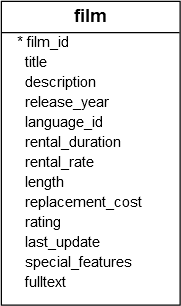September 26, 2023
Summary: in this tutorial, you will learn how to use the PostgreSQL aggregate functions such as AVG(), COUNT(), MIN(), MAX(), and SUM().
Table of Contents
Introduction to PostgreSQL aggregate functions
Aggregate functions perform a calculation on a set of rows and return a single row. PostgreSQL provides all standard SQL’s aggregate functions as follows:
- ARRAY_AGG() – return an array from a set of input values.
- AVG() – return the average value.
- COUNT() – return the number of values.
- MAX() – return the maximum value.
- MIN() – return the minimum value.
- STRING_AGG() – concatenate strings and place a separator between them.
- SUM() – return the sum of all or distinct values.
We often use the aggregate functions with the GROUP BY clause in the SELECT statement. In these cases, the GROUP BY clause divides the result set into groups of rows and the aggregate functions perform a calculation on each group e.g., maximum, minimum, average, etc.
You can use aggregate functions as expressions only in the following clauses:
PostgreSQL aggregate functions examples
Let’s use the film table in the sample database for the demonstration.

AVG() function examples
The following statement uses the AVG() function to calculate the average replacement cost of all films:
SELECT
ROUND( AVG( replacement_cost ), 2 ) avg_replacement_cost
FROM
film;
The following is the result:
avg_replacement_cost
----------------------
19.98
(1 row)
Noted that the ROUND() function was used to round the result to 2 decimal places.
To calculate the average replacement cost of the Drama films whose category id is 7, you use the following statement:
SELECT
ROUND( AVG( replacement_cost ), 2 ) avg_replacement_cost
FROM
film
INNER JOIN film_category USING(film_id)
INNER JOIN category USING(category_id)
WHERE
category_id = 7;
Here is the result:
avg_replacement_cost
----------------------
21.09
(1 row)
COUNT() function examples
To get the number of films, you use the COUNT(*) function as follows:
SELECT
COUNT(*)
FROM
film;
Here is the output:
count
-------
1000
(1 row)
To get the number of drama films, you use the following statement:
SELECT
COUNT(*) drama_films
FROM
film
INNER JOIN film_category USING(film_id)
INNER JOIN category USING(category_id)
WHERE
category_id = 7;
The result showed that we have 62 drama films:
drama_films
-------------
62
(1 row)
MAX() function examples
The following statement returns the maximum replacement cost of films.
SELECT
MAX(replacement_cost)
FROM
film;
Output:
max
-------
29.99
(1 row)
To get the films that have the maximum replacement cost, you use the following query:
SELECT
film_id,
title
FROM
film
WHERE
replacement_cost =(
SELECT
MAX( replacement_cost )
FROM
film
)
ORDER BY
title;
Output:
film_id | title
---------+-------------------------
34 | Arabia Dogma
52 | Ballroom Mockingbird
81 | Blindness Gun
85 | Bonnie Holocaust
138 | Chariots Conspiracy
...
The subquery returned the maximum replacement cost which then was used by the outer query for retrieving the film’s information.
MIN() function examples
The following example uses the MIN() function to return the minimum replacement cost of films:
SELECT
MIN(replacement_cost)
FROM
film;
Output:
min
------
9.99
(1 row)
To get the films which have the minimum replacement cost, you use the following query:
SELECT
film_id,
title
FROM
film
WHERE
replacement_cost =(
SELECT
MIN( replacement_cost )
FROM
film
)
ORDER BY
title;
Output:
film_id | title
---------+------------------------
23 | Anaconda Confessions
150 | Cider Desire
182 | Control Anthem
203 | Daisy Menagerie
...
SUM() function examples
The following statement uses the SUM() function to calculate the total length of films grouped by film’s rating:
SELECT
rating,
SUM( rental_duration )
FROM
film
GROUP BY
rating
ORDER BY
rating;
The following picture illustrates the result:
rating | sum
--------+------
G | 861
PG | 986
PG-13 | 1127
R | 931
NC-17 | 1080
(5 rows)
In this tutorial, you have learned about PostgreSQL aggregate functions and apply them to summarize data.

